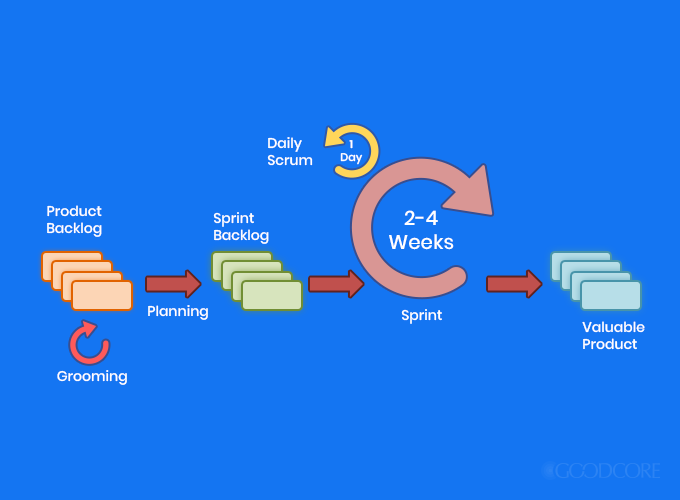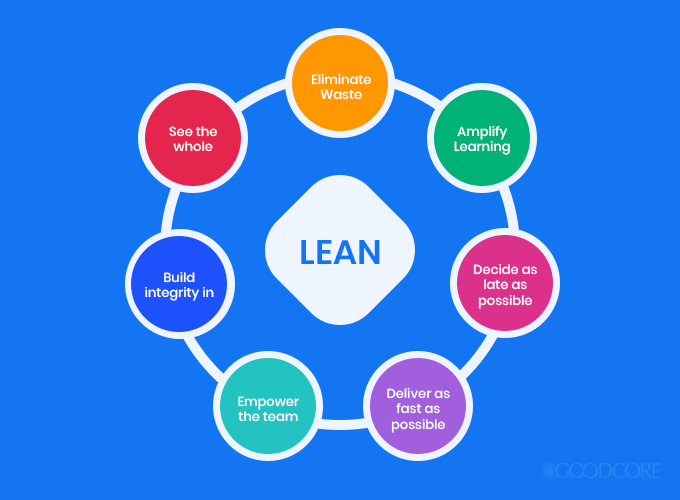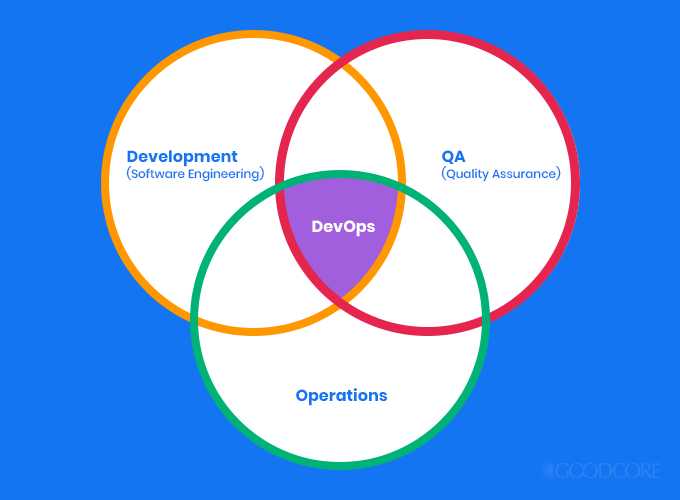Software Development Life Cycle
We all use different software apps that make our lives easier and save us time… using apps to check weather forecasts, stream music, call a taxi … these software apps have brought convenience in our lives and changed human behavior for good.
But have you ever wondered how these software apps came to be? How are they developed from creative ideas to functioning pieces of software? Well, if you have, then you need to know about the software development life cycle methodologies to understand how software engineers undertake the development process in order to bring such apps to life.
In this article, you will learn about the different types of System Development Life Cycles (SDLC) that have emerged over the years to make the development process time-efficient and productive, and how they differ from each other.
What Are SDLC Methodologies?
To understand what SDLC methodologies are, it is important to first know what the term SDLC means. The software development life cycle (SDLC) describes the steps undertaken by software engineers when developing a software, from beginning to the end. Just like every production process has steps that the expert takes to produce the end product. These steps usually include planning, designing, producing, testing, etc.
Let’s understand what the steps of SDLC methodologies are through an example. Imagine if you need to have a house built for you and your family. This process would involve multiple steps that you will have to perform, for instance, the first step would be to plan the layout with your family. Here you will evaluate what your requirements are, like how many rooms do your require and how big the house would be?
Getting an architect to put your ideas on engineering drawings would be the second step in the process. In this step, you will create a visual layout of how your house will look like. Once you have the design, you can start with the actual construction of the house by hiring contractors and sourcing material required to build the house. Next step would be to monitor if the house is being built to spec, if it meets the design requirements or not. And once you are satisfied with the house, you can furnish and start using it.

The software development life cycle also follows similar steps. Usually, the SDLC process is divided into 6 phases:
- Requirement analysis
- UI/UX Design
- Software Development/Coding
- Testing and Quality Assurance
- Deployment of final code
- Support and Maintenance

Although the phases of the development process remain unchanged, there are many ways in which software developers can perform functions within each phase. These are known as SDLC methodologies. Each approach undertakes the development process differently with a different hierarchy. But the common purpose of all software development process models is to assist engineers in creating high-quality software efficiently.
Often the software development models that are chosen for projects depend on multiple factors. These are: level of expertise required, business requirements, and the time and budget available for the SDLC process. So, to make an informed decision, a software engineer needs to know all the SDLC methodologies well. They can then decide on the one that best fits the project at hand.
For a beginner, these SDLC types and their distinctions can be confusing, but don’t worry! This article will answer all your queries about the variants of SDLC models available. It will also guide you in choosing the best SDLC practices.
Following are the 6 basic SDLC frameworks:
- Waterfall
- Agile
- Iterative
- Lean
- Spiral
- DevOps
Let’s look at each of these SDLC methodologies with their pros and cons in detail.
1. Waterfall

Waterfall is the simplest of all SDLC practices. It follows SDLC steps in a linear sequential order. Compared to other SDLC methods, Waterfall is a rigid approach to software development. In this approach, developers work step-by-step starting from requirement analysis to deployment. They only move on to the next step when the previous one is completed.
The process begins with a thorough requirement analysis for the project. This is performed by business analyst, customer representative(s) and Subject Matter Experts (SMEs). This is a critical step, as all business logic that needs to be developed in the software is defined here.
After defining and documenting all the requirements, the developers proceed to the designing phase (UI/UX). In this step, they produce a blueprint for the design of the entire project using wireframes. Using this design, the SDLC procedure enters the development phase. Here, the actual products are built by generating and implementing the code.
The fourth stage of the Waterfall method is Testing and Quality Assurance (Q/A), where the built software is tested for defects and bugs. This assesses the quality of the overall performance of the software. In the last stage of the SDLC process, the software is launched for the customers to use and monitored for any maintenance related issues.
The advantage of using a Waterfall SDLC model is that it is easy to plan and simple to manage. However, the drawback of the Waterfall model is a lack of flexibility in changing scope during the development process. It fixes the requirements once they are defined at the initial requirements gathering stage. Since it follows a linear system, this means that developers cannot start a new phase till the ongoing one is finished. This makes the process more rigid and time-consuming.
Requirement analysis is a fundamental stage with Waterfall SDLC method, thus, this step is time-consuming and costly. It can only be performed when the customers know all the requirements well and require the software developers to strictly follow them. Therefore, Waterfall is best used for smaller projects with clearly defined requirements.
2. Agile
Agility stands for ‘the ability to move quickly and easily’, and this is the purpose of an agile SDLC approach. Unlike the Waterfall model and similar SDLC approaches, the agile approach prioritizes shorter planning phases, staged/phased delivery to the customer and regular customer interaction.
This approach divides the development cycle into short-term deliveries called ‘Sprints’. Each sprint is two to four weeks long, and focuses on delivering a component of the final product. A team of developers is assigned to each sprint. After completing and testing the component during the sprint, it is delivered to the customer for feedback. Customer feedback helps developers add any required changes in the next sprint.

Unlike other SDLC methodologies, the agile model welcomes new requirements, even late in the development process. This ensures a valuable end product and higher customer satisfaction. It allows sponsors, developers, and users to maintain a constant pace throughout the development cycle. Thus, the agile process promotes a sustainable development of software that is time efficient and cost-effective.
However, the drawback of using an agile model over other development life cycle models is that it requires special skills. Since it does not have a rigorous planning stage, it also pays less attention to documentation of requirements and design. It structures the model around the concept of customer interaction. However, the approach can be in vain if the customer fails to communicate their requirements and feedback effectively.
The agile approach is best suited for customers with creative projects and uncertain requirements, especially start-ups, which can benefit from the flexibility of this approach.
3. Lean
Lean SDLC model is similar to the agile approach as it also focuses on efficiency, iterative improvements and swift delivery of the end product. This SDLC model emerged from the Japanese manufacturing method of lean production. It is rooted in the principle of increasing efficiency by reducing waste at every step of the development process.
Efficiency and productivity are fundamental for software development life cycle models today. For this, software engineers have turned towards leaner development processes to reduce waste and cost.
The seven Lean principles are:
- Eliminate waste: Any step or feature that does not add value for the user is considered wasteful and should be eliminated.
- Optimize the whole: Always focus on the entire development process and not just sub-steps.
- Amplify learning: The software development process should be structured such that it enables learning for all the involved members.
- Empower the team: Show respect to your project team and allow them the freedom to make decisions and take ownership of the development process.
- Decide as late as possible: Instead of making rash decisions, take your time to evaluate every possible option, gather information and then make an informed decision.
- Deliver as fast as possible: To make the delivery of software products swift, the software team should meet deadlines to deliver each component on the right time.
- Build quality in: To develop quality software products, quality assurance should be done at every step throughout the process and every aspect of the process should be made efficient.
Today, these principles have become integral to the modern development life cycle models.

Like the other SDLC methodologies, Lean life cycle begins with the stage of project planning. But, unlike traditional software life cycle models, the Lean approach does not have rigid project plans. It improves its plans constantly if the possibility of any waste-reducing change arises. After deciding the project plan, the lean approach proceeds for iteration planning. The plan for each iteration is specific, strict, and clearly lays down the responsibility for each team member.
In this model, developers only work on the task-at-hand rather than multitasking to avoid wasting time. Lean project teams also prioritize looking for opportunities to cut waste at every phase of the process. One way to achieve this is by reducing the number of meetings and documentation.
The biggest benefit of using a lean SDLC methodology is that, unlike Agile, it does not emphasize on customer feedback for higher satisfaction. Instead, it focuses on creating a better value for them by eliminating waste which in turn improves customer satisfaction.
4. Iterative
Developers introduced the iterative model of SDLC as an alternative to the Waterfall framework. This approach follows all the steps of a waterfall model but in repetitive cycles called ‘iterations’. The initial phase of the iterative model is planning and the last phase is deployment, with cyclical processes of planning, design, implementation, testing and evaluation in between.
The iterative approach is also known as an incremental process. This is because the final product – a system – is developed by working on smaller chunks during each iteration. These smaller portions go through the SDLC steps, especially testing, over repeated cycles. This allows software developers to identify errors and fix them. This ensures high-quality and efficient software as the end product.

Unlike agile, the iterative model requires less customer involvement and has a pre-defined scope of increments. Yet it still shares the same goals as an agile model. There are several advantages of an iterative approach. It produces a working version of the software early on the process and accommodates changes between increments. It also lowers the delivery cost and makes the delivery of the end product speedier.
5. Spiral
The spiral model is an incremental risk-oriented life cycle model that has 4 main phases:
- Define the objectives
- Analyze risks and resolve them
- Development and testing
- Plan the following iteration to continue the spiral
A software project will go through these 4 phases iteratively. Out of all the SDLC methodologies, Spiral is the most flexible model, as it combines the Waterfall model and prototyping approach.

In the first phase of the Spiral model, the developers gather requirements from the customer. In the second phase the risks and the alternate solutions are identified, and a prototype of the software is produced. They develop software and test it in the third phase. The evaluation of the software is completed in the last phase and the next iteration is planned.
Out of all SDLC methodologies, Spiral model offers a risk reduction advantage, where functionality can be added at a later stage of the development cycle because of the iterative nature of the process. Since it develops the software prototype early, this model can gather early feedback from the customers.
A spiral approach allows the development of products that are highly customized and tailored to meet the client’s requirements. It incorporates user feedback from early development stages of the project. It also allows developers to adopt multiple SDLC models based on the risk-level of the project. However, a pertinent risk involved in this approach is not knowing when to move on to the next stage. Hence, creating a continuous spiral for a project that keeps going on.
For the spiral model, the risk analysis requires highly specific expertise. The entire success of the project heavily depends on the risk analysis so it has to be accurate. It is also more complex than other SDLC methodologies and therefore can be costly to implement.
6. DevOps
DevOps is a comprehensive and integrated system to develop software. It was introduced in response to two recent trends in the technical community:
- Application of lean and agile SDLC tools to operations in the development life cycle.
- Collaboration of development and operations at all phases of the development life cycle.

The traditional view of software development models used to understand the “Dev” side and the “Ops” side as two isolated things. The former was considered as the “makers” of the system and the latter as those who deal with it after it is created. However, in a DevOps approach, Developers and Operators collaborate with each other. They work as a team to create innovative and high-quality software with increased efficiency.
In a traditional software development life cycle, once the product is developed and tested it is released to the Operations team for deployment. There needs to be efficient communication and synchronization between both the teams – Developer and Operations – for everything to function smoothly. If not, then there can be challenges such as:
- Differences in the development and production environment. As a result, the product that was running perfectly in the Development environment might not operate optimally in Production environment after the Operations team deploys it. This can result if both the Development and Operations teams were unable to communicate the correct environment requirements.
- In most cases, as a result of communication gap between Dev and Ops teams, developers do not have clear instructions about issues faced by end-users after the product is deployed on Production server(s).
DevOps is important to overcome these issues. The collaborative nature of the DevOps methodology ensures filling in the gaps within the development cycle. The main point of DevOps is to bridge the gap in communication between the developers and IT operators. This is essential in producing quality end products.
So, like many SDLC methodologies, DevOps represents not only an approach to developing software but also reflects a philosophy that demands significant attitudes and cultural changes in an organization.
The Question Is: Which One Is The Best Out Of All SDLC Frameworks?
To know which is the best model out of all the different types of SDLC models, it is important to understand that each of these approaches are suitable for different projects, environments, and requirements.
For example, if your project is simple and straightforward with set requirements that do not need to be changed, then Waterfall is best suited for it. However, if your project is large-scale and consists of multiple components and segments, then choosing Iterative or Spiral methodology would suit your project better.
To answer the question simply, there is no ONE best model from all the SDLC models discussed in this article. A preference of one method over the others cannot be determined.
However, to select the right SDLC methodologies, you should know all the types of SDLC models, assess the requirements of all the stakeholders and then decide on a method that best fits your needs.
Conclusion
Whether you prefer a specific type of SDLC methodology over others or not, it is fundamental for you to understand the value and importance of selecting the right methodology for your software project. At GoodCore Software, we have an outstanding team of skilled and dedicated individuals who are experts in designing and building software solutions that are successful for your needs, and we will choose the right SDLC methodology that suits your specific project.
Comments
Post a Comment